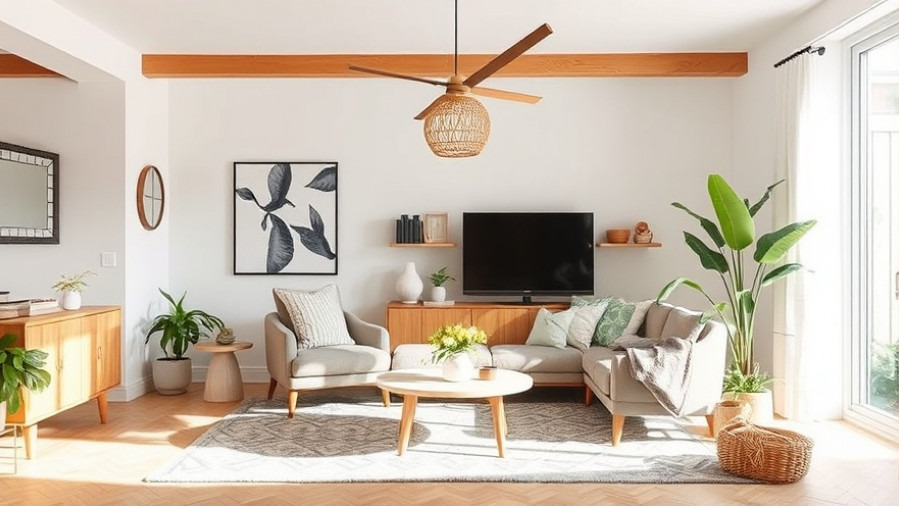
Embrace Multifunctionality: A Modern Necessity
As homeowners in the greater Hampton Roads area reconsider their living spaces, multifunctionality has become a key element of modern interior design. Gone are the days where specific rooms serve only one purpose. Today's designs are more adaptable, blending functionality with style to accommodate the evolving needs of family-oriented households. Whether it's a living room doubling as a workspace or a dining area transforming into a play zone, understanding how to create multifunctional environments is essential for enhancing your home and lifestyle.
Looking Back: The Evolution of Space Utilization
The shift towards multifunctionality isn't a new concept; it echoes historical practices where spaces were designed out of necessity rather than luxury. Historically, homes featured multi-use rooms where families gathered, cooked, and entertained. The pandemic has reignited this trend, pushing people to rethink how their homes serve them not just in comfort, but in efficiency and diversity.
Why Multifunctionality Matters Today
As families juggle remote work, homeschooling, and leisure time within their homes, the importance of versatile designs has never been clearer. According to interior design experts and the latest trends for 2025, homeowners are now prioritizing spaces that can seamlessly transition from one activity to another. This trend is highlighted in the Decorilla report which points to workspace adaptations within living areas—such as foldaway desks and comfortable seating that encourage both productivity and relaxation.
Current Trends: Stylish and Functional
Curvy Furniture: One of the standout trends for 2025 emphasizes comfort with stylized, curvy furniture. Pieces like rounded sofas or soft-edged tables not only enhance comfort but also help define spaces in open floor plans.
Natural Materials: There’s a rise in using natural textures alongside multifunctionality. Organic materials in furniture—like untreated woods and smooth stones—create inviting spaces while promoting wellness by connecting us to nature.
Layered Designs: Maximalism is making a comeback. Instead of stark minimalism, designers are encouraging layering different textures and styles to create visually rich environments that still maintain practicality.
Designing Your Multifunctional Space
The approach to creating a multifunctional space begins with understanding your family’s unique needs. Here are some actionable tips for homeowners:
Identify Key Activities: Consider what activities happen most frequently in each room. Do you need a place for work adjacent to play? Perhaps a kitchen that flows into a dining and study area?
Choose Flexible Furniture: Invest in pieces that serve multiple purposes. For example, a sofa bed can transition from seating area to guest space, while nested tables provide extra surfaces when entertaining.
Utilize Division Wisely: Use area rugs, screens, or even bookshelves to delineate spaces without requiring physical walls. This promotes an open feel while segmenting areas for specific tasks.
Incorporating Trends into Your Design
Brought forth by lifestyle needs, the emphasis on wellness, sustainability, and personalization is essential to today's interior design. Embracing these elements not only enhances your home’s aesthetic but also promotes emotional well-being. As you navigate recent trends, exploring options like Scandinavian or minimalist designs can provide both inspiration and direction for your transformation.
Your Next Steps: Get Expert Design Help
For homeowners in Chesapeake, Norfolk, and surrounding areas, local interior designers can provide tailored advice that resonates with both your aesthetic and functional desires. If you're looking to revamp your home spaces with a multifunctional approach, tailored recommendations are just a call away. Contact Us for recommendations in the greater Hampton Roads area, and take the first step toward creating your dream home!
 Add Row
Add Row  Add
Add 



Write A Comment